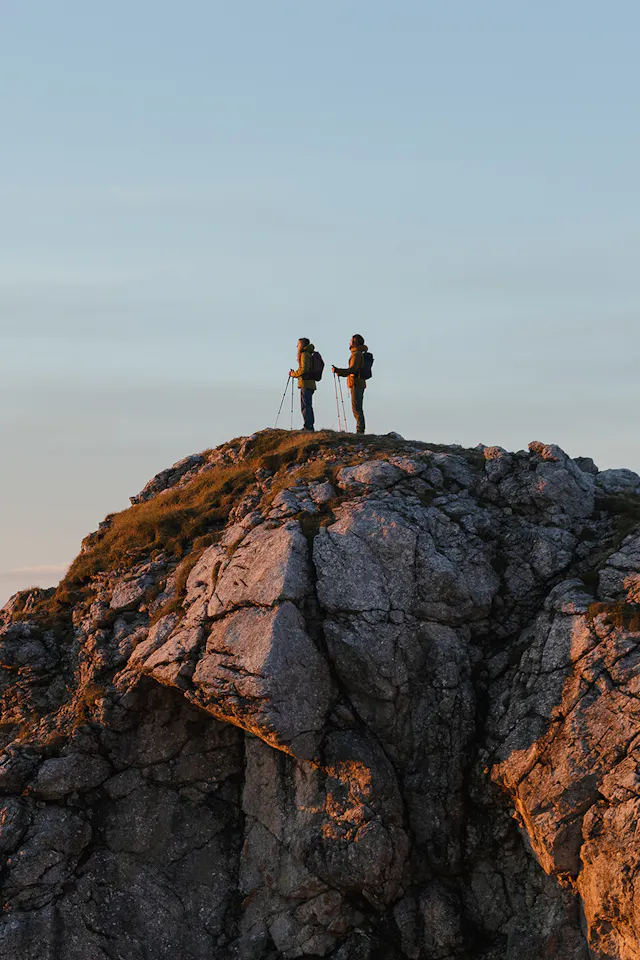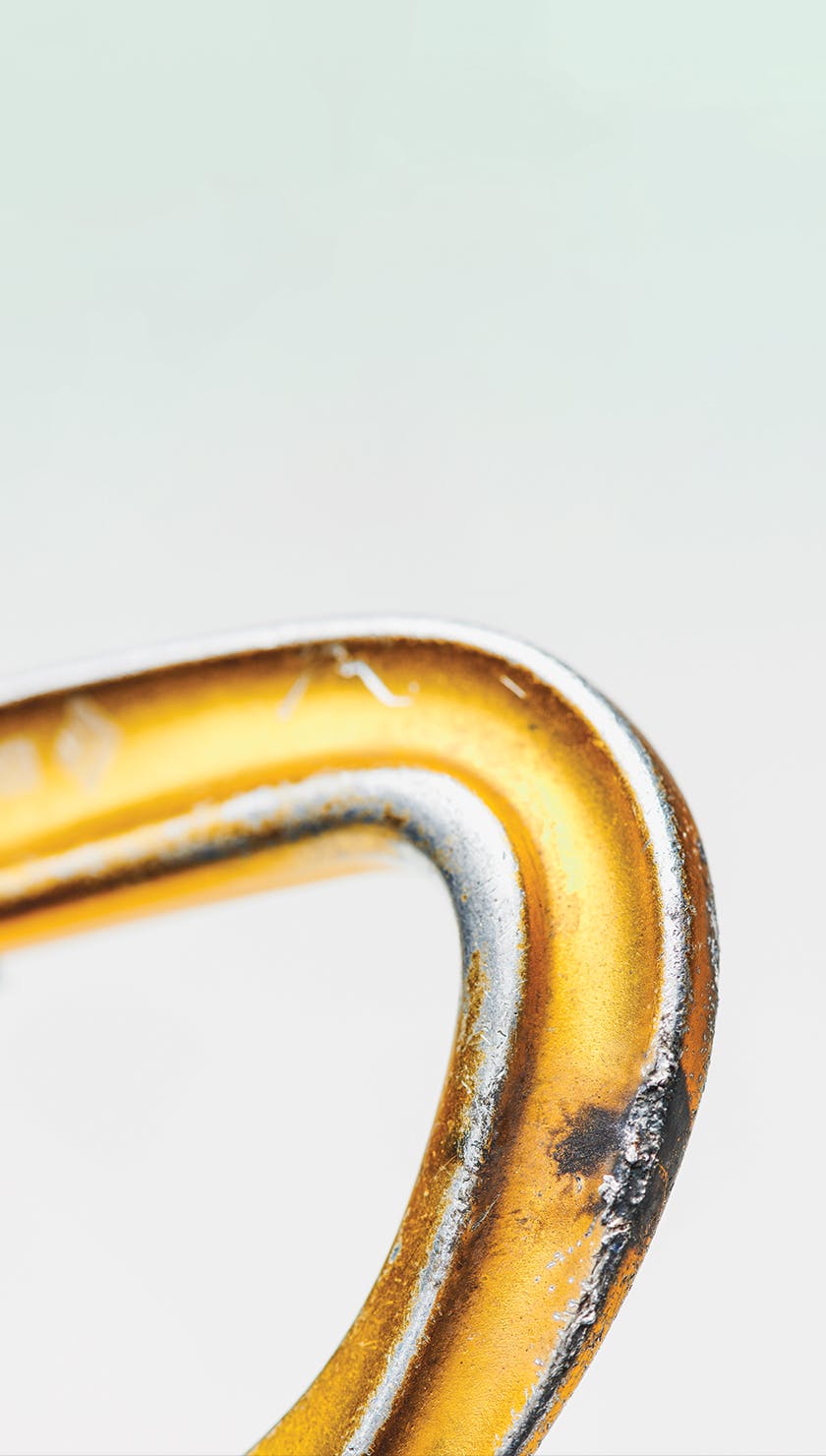It started with a cryptic email.
Hey KP,
Are you interested in testing BD gear that got struck by lightning?
--Dave
Our first reaction was, “are you OK?”
Second reaction: you bet your big cams we are.
A week or so later, a scruffy climber with shoulder length hair, unkempt beard, and an MIT hat strolled into the Black Diamond QC Lab toting a rack recently struck by a bolt of lightning.
Dave, who works as a physics professor at MIT (hence the hat), described in detail what happened.
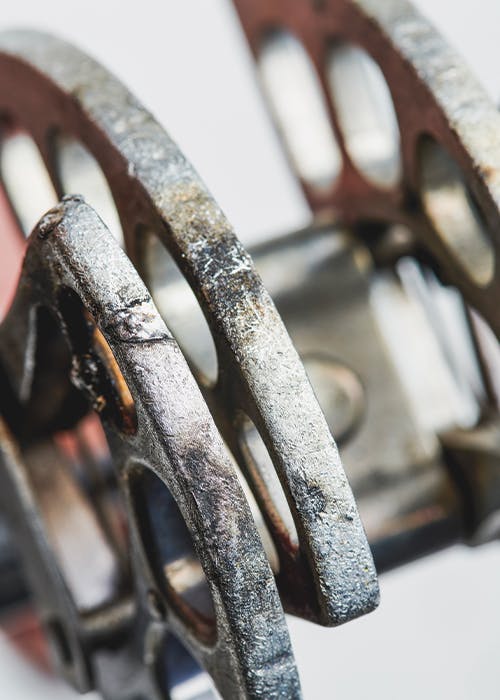

The Incident:
Dave is a veteran trad climber with a penchant for obscure routes.
“I like that kind of climbing because I don’t like following directions,” says Dave.
That’s why he and his partner Susan were five miles deep into the backcountry of Tuolumne on a mid-summer’s eve.
The day had been uneventful. Dave and Susan were receiving regular weather forecasts from an inReach, and the impending thunderstorms had influenced their decision to rest and go for a re-supply trip to town. They got back to camp around 3 p.m. when the storm started to roll in.
“We put all the climbing gear in a backpack and stuck it under a tree so it would stay dry,” remembers Dave. “We get in the tent, and it starts raining, and it starts hailing, and then the hail got big.”
Dave and Susan opened the tent door to watch the storm. As the hail grew to the size of golf balls, they noticed there wasn’t much time between the bolts of lightning and thunder. That’s when Dave’s memory gets fuzzy.
“In my mind’s replay, I’m watching hail, and then there’s one frame that’s very bright and very loud, and then there’s like four frames I don’t know anything about, but I’m out of the tent, and the tent is smoldering.”
While unsure of the exact details, Dave believes lightning struck the top of the tent, blowing Susan to the back of the shelter while he was flung forward through the door.
“I just remember a big noise, and big flashes, and I was like, ‘oh, darn, I just got hit by lightning.’ But I really have no recollection.”
After dusting themselves off and realizing they were remarkably unscathed albeit some ringing in their ears, they began to survey the scene.
All the joints of the tent poles were molten. Fragments of Dave’s climbing helmet were scattered about—up to 40 feet away he’d later discover—and that backpack of gear? Completely destroyed.
“Everywhere around, the soil was wet, but underneath the backpack the dirt was vaporized, and it blew the backpack three feet,” he says. “The backpack itself completely exploded.”
As for the gear inside, upon inspection, it was clear the metal had taken a ride on the lightning.
“Any place where metal touched another piece of metal, that’s where it’s like a little spot weld,” says Dave.
Though subtle, the tell-tale signs of electricity were evident in the cams, nuts, and slings of Dave’s rack. He immediately retired all the gear but was curious. Was the integrity of each piece compromised?
Let’s find out.
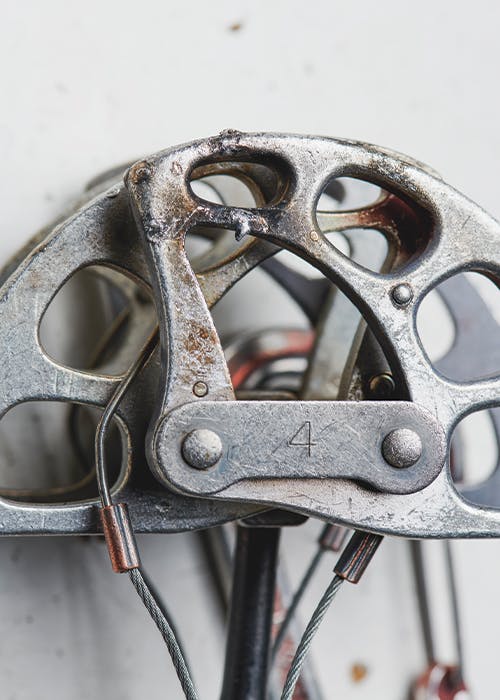
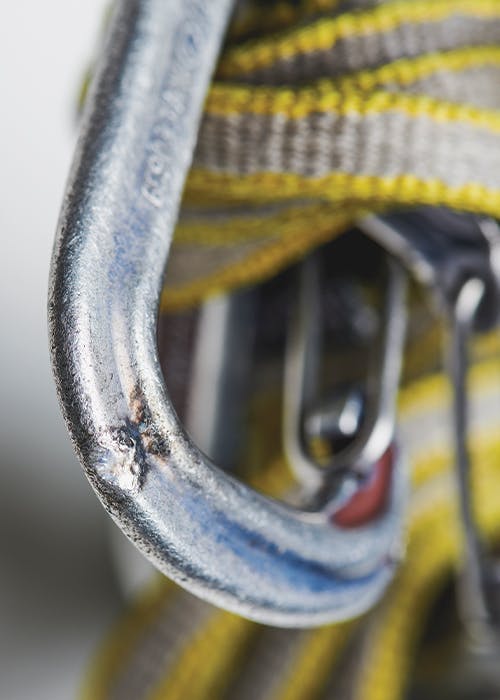
The Testing:
The QC lab crew fired up the tensile tester and did what they do best: break stuff.
We tested all of Dave’s suspect gear in typical CE type configurations. Ultimately, we wanted to try to understand if some of the visual indicators of the zappage, which frankly looked like someone went to town doing some spot welding, would compromise the integrity of the gear.
And as usual, all of us engineering nerds do our best to make educated guesses as to the values and failure modes prior to the tests being performed.
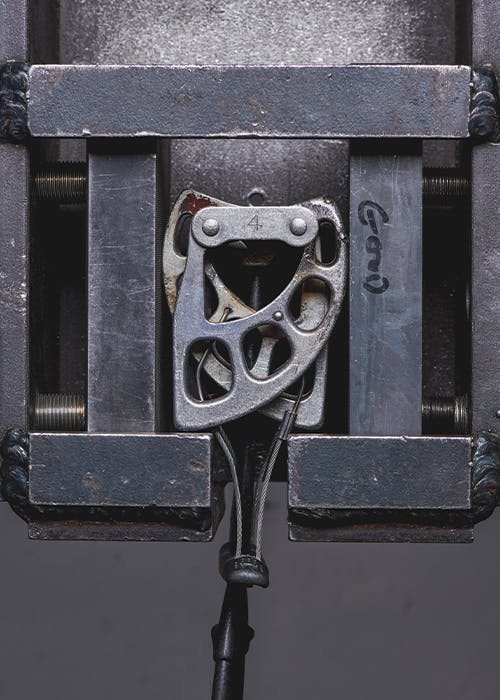
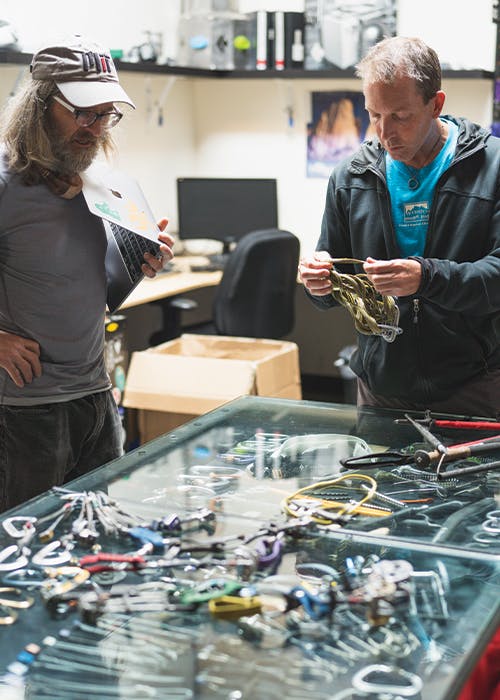
Results:
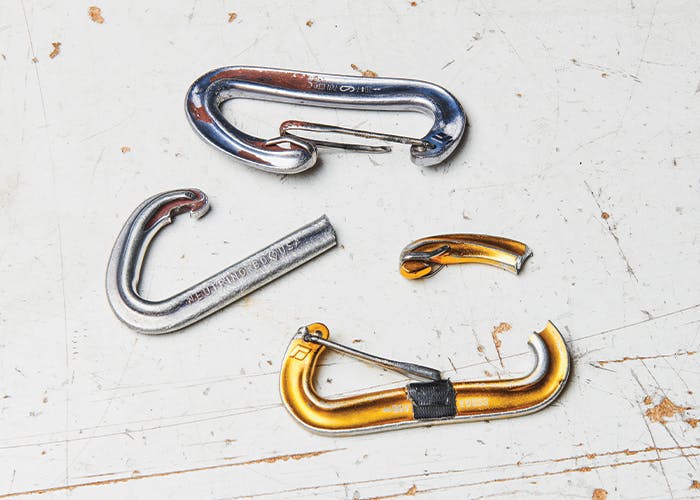
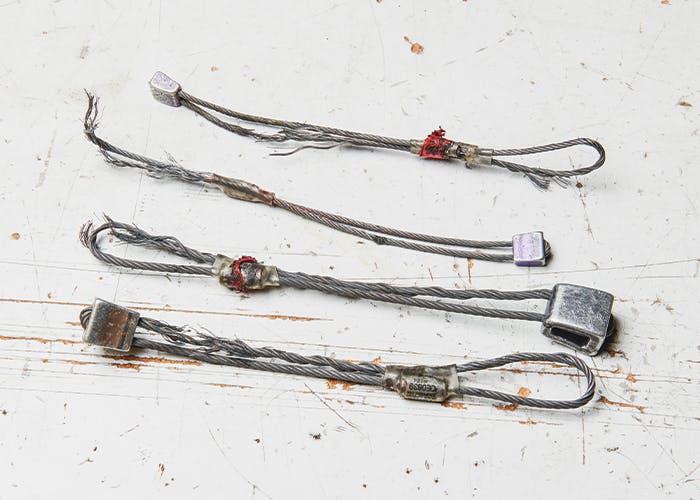
Conclusions:
In some cases, as we hypothesized, the location of the lightning strike indications did not have a significant effect on the ultimate strength. For example, the “spot welds” found on the cams weren’t in an area of high stress and thus did not cause a notable reduction in strength. On the other hand, the stopper cables showed more obvious damage and resulted in non-typical failure modes at times, as well as reduced peak loads, and did not meet the original (when new) rating of the product.
It's worth noting that, although the test result was high on the Oz carabiner, the “spot weld” ultimately acted like a stress riser and forced the failure mode to that location. This is what is noted as a non-typical failure mode. Not overly surprising really, but interesting, nonetheless.
The slings had the largest reduction in ultimate strength. We typically see that nylons/technical soft goods have a higher probability of losing strength when it comes to aging (i.e. metal products don’t typically age much). In this case, we saw a significant reduction in strength likely due to a combination of their age, wear, and damage caused by the lightning strike. It is important to note that these slings were fairly worn and damaged. They felt stiff and crusty. Even a relatively new climber would likely have thought something was a bit suspect when running these slings through their hands.


Bottom Line:
We’ve been in the mountains a lot in our lives, and have been in some sketchy situations. By far, the scariest and sketchiest is lightning. Our philosophy is that when there’s lightning nearby … get the hell out of there. When it comes to your gear—it appears that Dave and Susan did the right thing by placing their gear relatively far from themselves so as not to attract the lightning directly! At the end of the day:
1) Don’t let your gear get struck by lightning.
2) The moral of the story here is inspect your gear.
Dave did the right thing by having a detailed look at his gear after this incident. Things that visually looked suspect, he retired. Based on our testing this was a good decision. When we could visually see or feel that something wasn’t right, the results correlated to decreased strength and reduced integrity. When in doubt, throw it out. The absolute last thing anyone needs on their mind while on some pitch 20ft above the last piece, with Elvis leg and sketching out is: “I wonder if that’s the stopper that got struck by lightning … and I wonder if it’ll hold if I take this 50ft lobber onto it!”
Be safe out there,
CP, KP, Berry
Featured Equipment
Shop More Equipment

